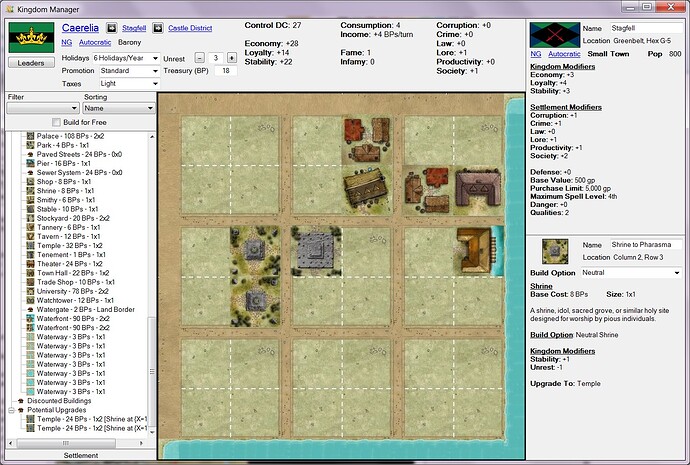So I just purchased the Settler’s Supplement for Fallout 2d20 and it’s a direct TTRPG conversion of Fallout 4.
Nothing intrinsically wrong with that, but I was hoping it would have rules for larger towns. What’s in the book is good if you’re creating a small clan of 10-20ish people, but what if I wanted to create the Den, for example?
Thoughts about scaling?
I agree that we need a rule of thumb to scale it, for example “Deconstructing Diamond City’s Location” on p.119 says “Huge in size” but it keeps it vague with the population. People simply states “…close to its maximum People score…”
One way around the limit could be Disctricts, which are hinted at (Upper Stands / Lower Fields) that way it kind of ressembles Pathfinder Kingmaker’s Settlement maps with districts.
Thoughts on this suggestion?
One thing I’d really like is a model to create New Objects, especially to understand how Construction Time is calculated and how to easily figure out Materials required.
For example if I want to add Solar Panels to the list of Power objects:
Solar Panels: Common materials 22, uncommon materials 9, Power 5, Science!2, now this one I copied from one of the FO4 mods for materials, perk and power but I have no idea how to assign a construction time.
Any ideas?
As a quick and dirty ballpark for construction times I would take the amount of materials (maybe with multiplers for uncommon and rare materials that are more difficult to handle) for somewhat similar existing items, do the same for your enw item and make the time proprtional.
@manunancy What do you mean by multiplier? Can you give an example?
basicaly, to have something like common materials x1, uncomon x2 rare x3 (or other values if it fits better, maybe the price in caps as a multiplier). So something offical that costs say 10 commons and 3 uncommons would rank at 16 (10x1 + 3 x2). If your new item costs say 10 commons, 2 uncommons and 2 rares for a cost of 20 (10x1 + 2x2 + 3x2) then build time should be 25% more (20/16)
Note tha tthose numbers are just picked at random to explain what i have in mind.
